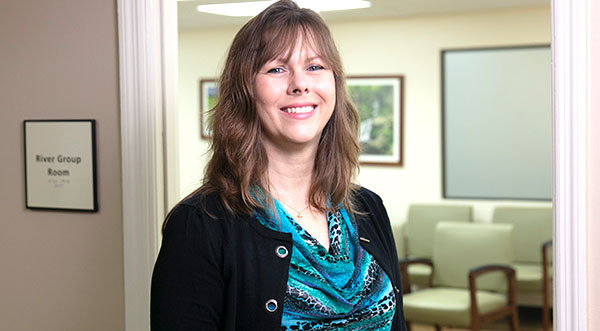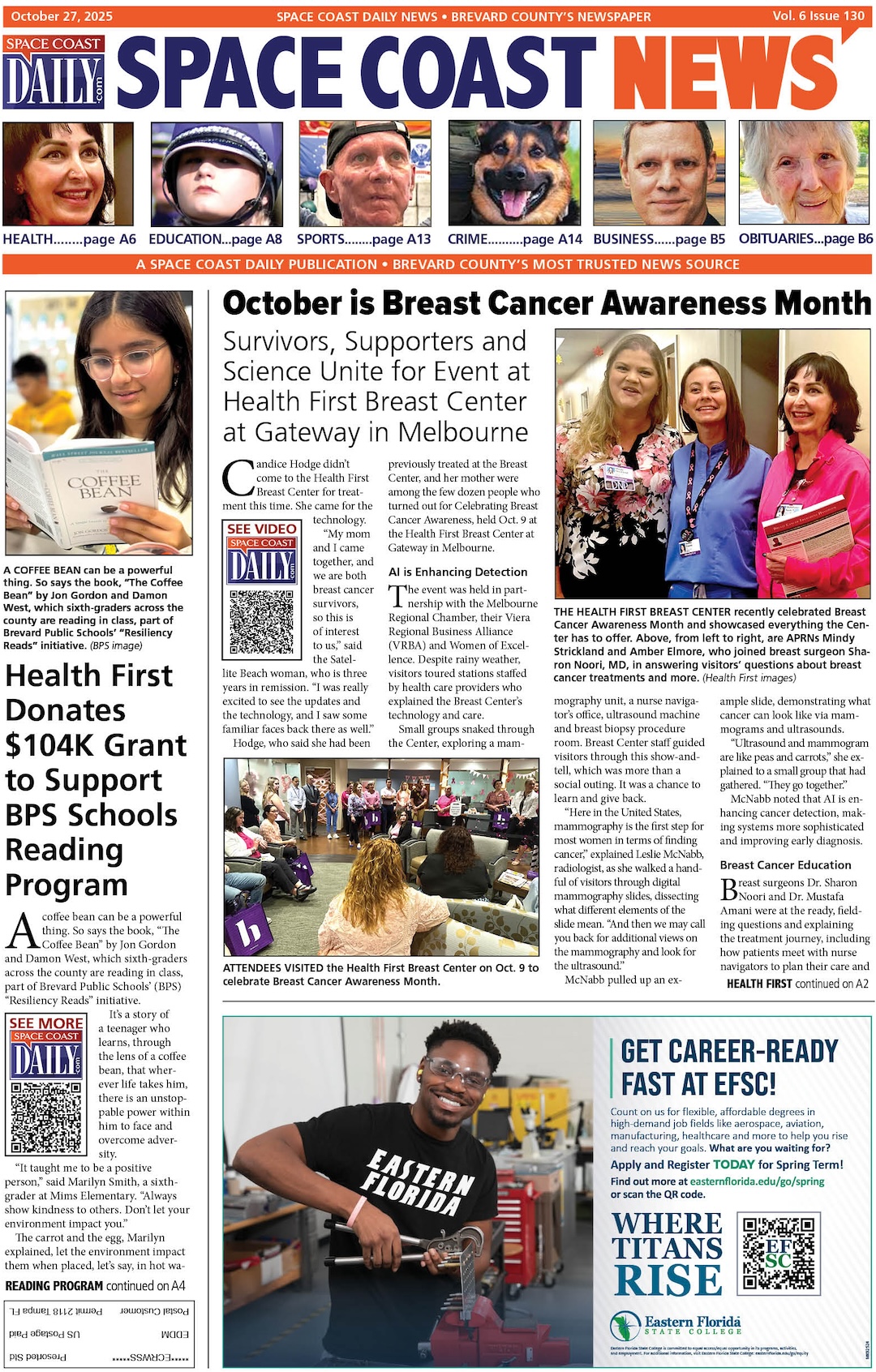Health First Expert Says Even the Sunshine State isn’t Immune to Seasonal Affective Disorder
By Space Coast Daily // October 28, 2025
When Endless Summer Meets the Winter Blues

BREVARD COUNTY, FLORIDA — It’s easy to see why Florida is called the Sunshine State.
Mornings, golden glow along palm-lined streets; patios hum with conversation and coffee cups; and a soft Atlantic breeze make it feel like summer all year long. Sunshine isn’t just weather here — it’s a way of life.
For many newcomers, it’s one of the biggest reasons they’ve made Florida home. Brevard County has seen that appeal firsthand.
According to Florida’s Office of Economic and Demographic Research, the county’s population grew from an estimated 606,612 in 2020 to 653,703 in 2024 — an increase of 7.8%.
The lure of endless summer continues to draw new residents, but mental health experts caution that, even in the Sunshine State, people can still struggle as seasons change.

“Even in mental health, I’ve only seen one true seasonal affective disorder (SAD) diagnosis in 10 years,” says DeAnn Collins, Behavioral Health Services Clinical Manager at Health First.
“But that doesn’t mean people aren’t experiencing symptoms. It’s probably more common than we realize — it’s just underdiagnosed because we have so much sunshine.”
Florida’s skies may be bright, Collins adds, but that doesn’t make anyone immune.
“You can have all the sunshine in the world,” she says, “but if your body’s chemistry or your stress levels are off, you can still experience seasonal changes in mood.”
SAD is more than just the “winter blues.” It’s a form of depression that follows a seasonal pattern — typically surfacing during the fall and winter months when daylight hours are shorter.
The lack of sunlight affects the body’s internal clock and serotonin levels, both of which influence mood and energy.
While most cases occur in colder, darker regions, Collins says she’s seen signs of SAD even among Florida patients.
“Sometimes it’s subtle,” she explains. “People just feel off for a few months and can’t quite put their finger on why.”
SAD symptoms often mirror those of major depression but follow a seasonal rhythm. Collins encourages people to take notes if they experience low moods around the same time each year.
Common symptoms include:
■ Persistent sadness or lack of motivation
■ of interest in usual activities
■ Oversleeping or insomnia
■ Fatigue or low energy
■ Difficulty concentrating
■ Changes in appetite or weight
■ Feelings of hopelessness or irritability
■ Withdrawing from friends or social activities
Research shows that women are more likely to experience SAD than men — roughly 9–10% of women compared to 3–5% of men. College students are also vulnerable, particularly during the early months of the school year when academic pressure rises and outdoor activity drops.
“If someone has ADHD, they’re about 27% more likely to develop SAD,” Collins adds. “And if there’s a family history of depression or bipolar disorder, the risk increases.”
Sunlight plays a key role in regulating mood. Exposure to natural light increases serotonin production and helps balance melatonin levels, which govern sleep and energy cycles.
That’s why many people who relocate to Florida from northern states notice an almost immediate lift in mood.

But less sunshine doesn’t just affect emotions — it can also limit the body’s production of vitamin D.
In a previous Health First story, Dr. Gary Hardoon, an internal medicine physician at Health First, noted that he sees a significant number of patients with vitamin D deficiency, particularly those who spend most of their time indoors.
People who head to work before sunrise and return home after sunset often miss out on essential sunlight exposure — the same lack of light that can influence mood and contribute to symptoms of SAD.
“When I moved from Central New York — where we had about 200 cloudy days a year — to Florida, it was an immediate mood boost,” Collins says. “But I like to think of it less as a switch and more like a dimmer. More light can help, but it’s not a cure.”
Light therapy — sitting near a specialized lamp that mimics natural sunlight — is one of the most recognized treatments for SAD. But Collins cautions that not all light is created equal.
“It’s a very specific UVB light — not a tanning bed or a regular lamp,” she explains.
“These therapy boxes emit about 10,000 lux of light. But results vary; what works for one person might not work for another.”
She recommends consulting a primary care provider before beginning any light therapy.
“Always start with a medical evaluation first,” she says. “Rule out physical causes before assuming it’s a mental health issue.”
When light therapy alone isn’t enough, other treatments can make a difference. These may include:
■ Cognitive Behavioral Therapy (CBT) — structured talk therapy proven effective for depression and SAD.
■ Antidepressant medication — especially when symptoms significantly impact daily life.
■ Group therapy or support programs, such as Health First’s Intensive Outpatient Program (IOP) for moderate-to-severe cases.
Health First also offers Collaborative Care, available in select primary care offices, where patients can meet a behavioral health manager directly through their physician’s practice.
“If the provider has an opening, patients can often meet that same day,” Collins says. “It’s a warm handoff — the doctor introduces the behavioral care manager, who can then determine next steps or ongoing support.”
The best time to seek support, she says, is before symptoms become overwhelming.
“You can never seek help too early.”
Keeping a symptom and sleep log can also help identify patterns.
“Our memories aren’t perfect,” Collins adds. “Writing things down helps both you and your provider see trends that might otherwise be missed.”
Even with growing awareness, Collins says stigma remains one of the biggest barriers to care.
“We still hear things like, ‘You’re just tired,’ or ‘You don’t need help,’” she says. “But SAD is a form of major depression. Taking it seriously is how we get better.”
As more people move to Brevard County from colder, darker regions, Collins says they may bring with them seasonal patterns that persist despite the sunshine.
While many notice their mood improves, others continue to experience the same seasonal dips — especially when genetics or underlying mental health conditions are involved. Sunshine helps, but it doesn’t automatically heal.
The good news, Collins says, is that awareness and early care make all the difference.
“The earlier we address mental health symptoms, the better the outcomes,” she says. “You don’t have to wait until it feels unbearable. There’s no shame in wanting to feel better.”
Even in Florida’s year-round light, seasonal mood changes can still cast a shadow. Recognizing the signs early, seeking support, and balancing body and mind — that’s how Floridians can truly make the most of their sunshine.













